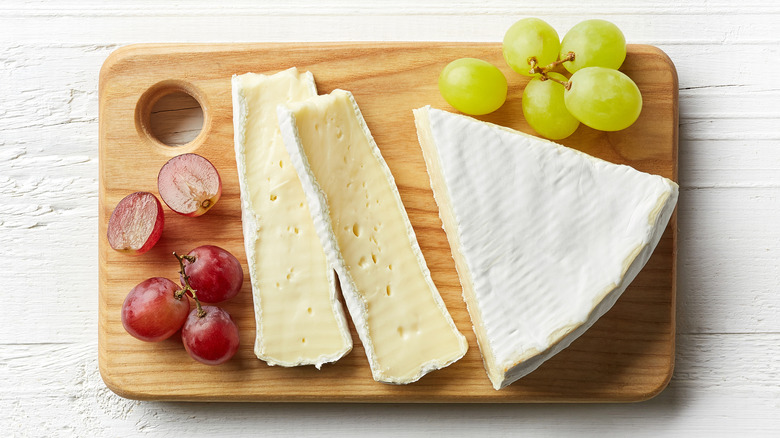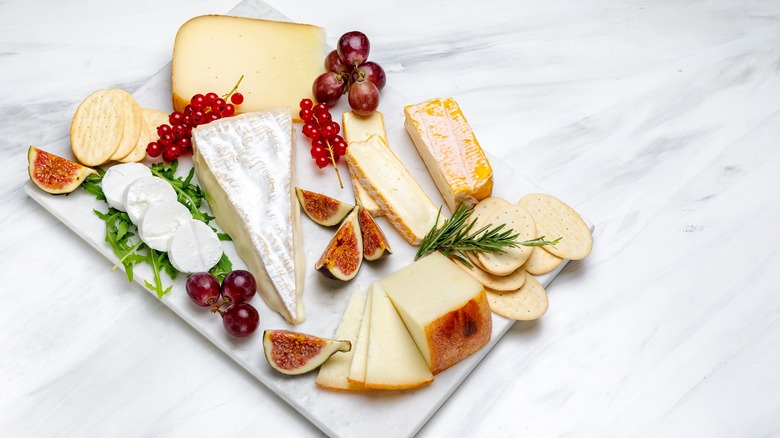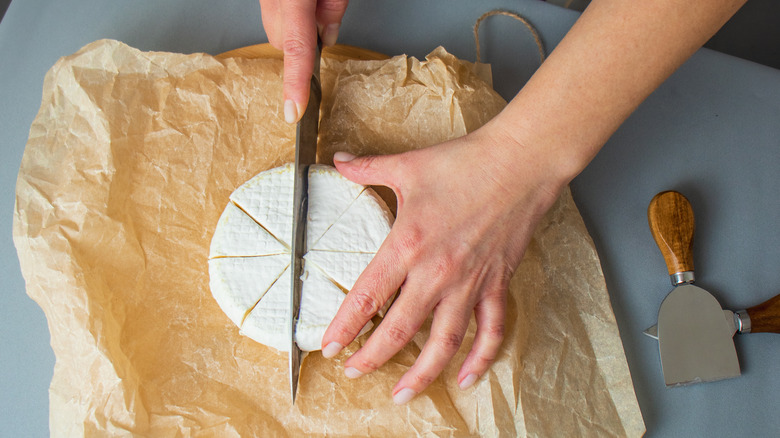The Charcuterie Board Etiquette Mistake You Didn't Know You Were Making
Whether you're making micro charcuterie boards or full-blown charcuterie chalets to really wow your guests, the art of charcuterie is one that requires a certain amount of savoir-faire. This is doubly true for cheese, a necessary charcuterie board accompaniment.
When digging into your delicious charcuterie and cheese board, you want to pay special attention to how you cut your cheese. A common mistake that many people make occurs when cutting triangular wedges of soft cheese. At all costs, you want to avoid cutting off the pointy end, also known as the nose. (Duels with cheese knives have been known to ensue.) The appropriate way to slice a wedge is lengthwise, from tip to rind, in thin slices. Think about it this way: If you were slicing the same type of cheese from a wheel, you would cut it into wedges like a cake. So you want to simply continue the same process on a smaller scale.
Surface ripened cheeses need a nose
The reason that you want to slice your cheese from nose to rind is that wheels of cheese have different flavors throughout. Depending on the type of cheese, some age from the inside out — while others age from the outside in. If a cheese ages from the outside in, like Brie, it is considered a surface-ripened cheese. These varieties often have bloomy rinds or washed rinds, in which brine or other cultures are added to the surface of the cheese, allowing the flavor to slowly work its way inside.
This is why the nose of a soft cheese is often considered to be creamier and sweeter than the rest while the rind typically holds more flavor. Other cheeses, however, like cheddar and Swiss, are ripened from the inside out and typically covered in wax or cloth during the process to prevent the development of a rind. They won't have quite the same difference in flavor within the wheel, which is why they are often cut flush to the rind or in blocks.
How to cut other types of cheese
Wedge cheeses like Brie aren't the only types that are meant to be cut in a particular way. If you're working with a cheese that is wheel-, square- (with a rind, not pre-cut to be square-shaped), heart-, or pyramid-shaped, you'll want to stick to the birthday cake method of cutting it into wedges. For logs, particularly goat cheese, you can slice them into circles.
Wheels of hard cheese take a different tack. Really hard and crumbly cheeses can be broken down into chunks since they don't tend to slice well. For semi-hard cheeses like Comté, you want to follow the triangular wedge approach to get all the different flavors possible. But instead of slicing from the top down, as with Brie, you're going to want to turn the wedge on its side and slice it from the rind to the center edge. This leaves you with two side slices of rind that can be discarded.
Easiest of all are rectangular bricks of cheese, like cheddar, which can be sliced into neat little rectangles that will taste the same throughout the entire piece. And now you know all you need to know to make that cheese and charcuterie board look (and taste) as amazing as possible!



